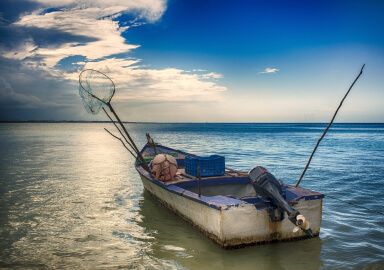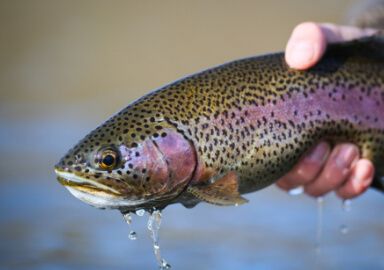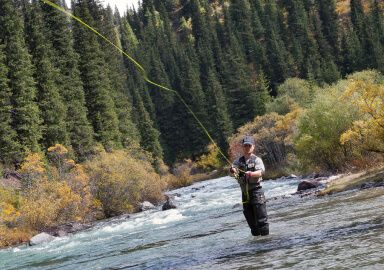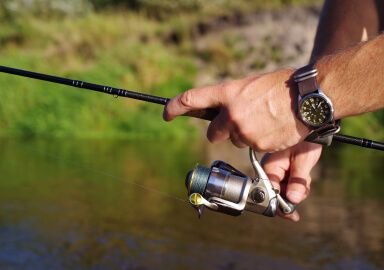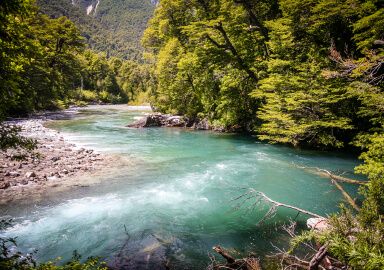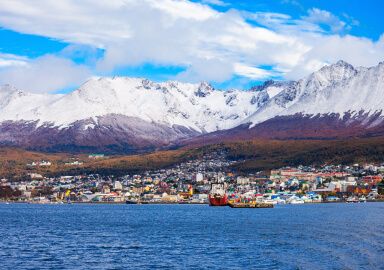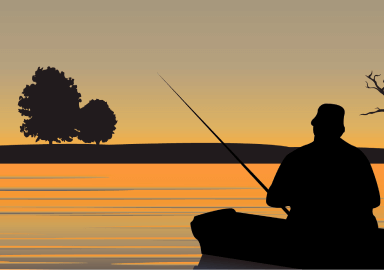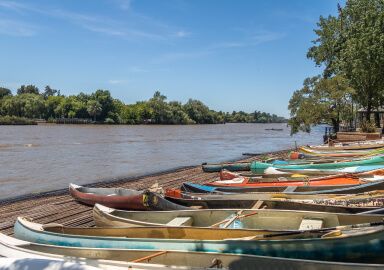Fishing in Santa Cruz Province
Santa Cruz Province is home to some of the best wild trout fishing in the world, where anglers can target massive sea-run brown trout in legendary rivers and experience true Patagonian wilderness.
View 1 listing
1
listings
–
price starting from
2
fish species
–
to the nearest trip
About Santa Cruz Province
The Argentinean province of Santa Cruz is located in the heart of Patagonia, on the southern end of South America, between Tierra del Fuego in the south, Chubut in the north, the Atlantic Ocean in the east, and Chile in the West. It is a vast and rugged area known for its towering mountains, sweeping steppes, and remote, glacier-fed rivers.
Washed by the cold Falkland Current, Santa Cruz is a rather cold place, with annual temperatures around 8 to 9 °C (46.4 to 48.2 °F). Geographically, it is divided into two areas: the eastern, covered by plateaus, and the western, which is mountainous. The Andes block most of the rain clouds coming from the Pacific with the predominantly western winds, so the area is low on precipitation, with rivers and lakes fed by glaciers. Wind is almost always there, however, with gusts of up to 200 kilometres per hour (120 mph) in some places. If you’re planning a fishing trip to Santa Cruz, dress in layers with a strong windproof outer shell, and don’t forget the sun screen.
Santa Cruz is Argentina’s second largest and least densely populated province, and one of the wealthiest as well. Its wealth comes largely from the extraction industry, and a bit of sheep farming, but there are enough unspoilt wilderness areas for nature lovers. The area is famous for its glaciers, making the world’s biggest ice shield outside the polar areas. The Los Glaciares National Park is its most visited tourist destination, and elsewhere in Santa Cruz there are excellent opportunities for trekking, rafting, and top notch trout and salmon fishing. Click to learn more about fishing in Argentina.
Fishing Types
Fishing in Santa Cruz is centered around its famous river and lakes, where trout thrive in the cold, oxygen-rich waters. The province is best known for its sea-run brown trout fishing, with rivers like the Río Gallegos and Río Grande providing some of the most exciting fly fishing in the world. These rivers see annual migrations of enormous brown trout that grow to impressive sizes in the ocean before returning to freshwater to spawn, creating incredible opportunities for anglers seeking trophy fish.
Beyond the sea-run fisheries, Santa Cruz is home to countless glacial lakes and spring-fed streams that hold resident trout. Lago Strobel, often called "Jurassic Lake," is particularly famous for its gigantic rainbow trout, which grow to extraordinary sizes due to the lake’s rich food supply. Smaller rivers and streams offer wild brook and brown trout, with anglers often having entire stretches of water to themselves.
Targeted Fish Species
Santa Cruz is best known for its massive sea-run brown trout, which migrate up the province’s rivers each year and provide one of the most thrilling freshwater fishing experiences in the world. These powerful fish can reach over 20 pounds and are prized for their strength, endurance, and acrobatic fights. Like all salmonids, they are not native to these waters, being released by wealthy fishing enthusiasts in the early XX century, but nobody really regrets the presence of these invasives.
Resident brown trout are also abundant in many of the province’s rivers and lakes, often growing to impressive sizes in these cold, nutrient-rich waters. Rainbow trout, particularly in Lago Strobel and other large lakes, can grow to enormous proportions, offering incredible opportunities for anglers looking for trophy-sized fish. Brook trout are also found in the province’s more remote streams and high-altitude lakes, providing a unique challenge for fly fishers.
Along the Atlantic coast, there are abundant fisheries for hake and other sea species, but they are mostly commercial in nature, and offer little recreational opportunities.
Fishing Techniques
Fly fishing is the dominant technique in Santa Cruz. Pack up a 7-weight spey rod for sea-run browns, and perhaps a lighter one-hand rod for the resident trout. In terms of line and fly selection, variety and diversity are recommended. Local guides swear by relatively smaller nymphs with exaggerated rubber legs for sea-run trout, but other flies and large streamers may work well too, depending on the circumstances.
Presentation is said to be more important than the fly, and careful approach to the pool is essential, so as not to spook that trophy trout. Dry fly fishing is also possible, particularly for resident brown trout in smaller rivers and for rainbow trout in high-altitude lakes. The fishing season runs from November to April, and as a rule of thumb, the later into the season, the better your chances at an outstanding sea-run brown trout action.

